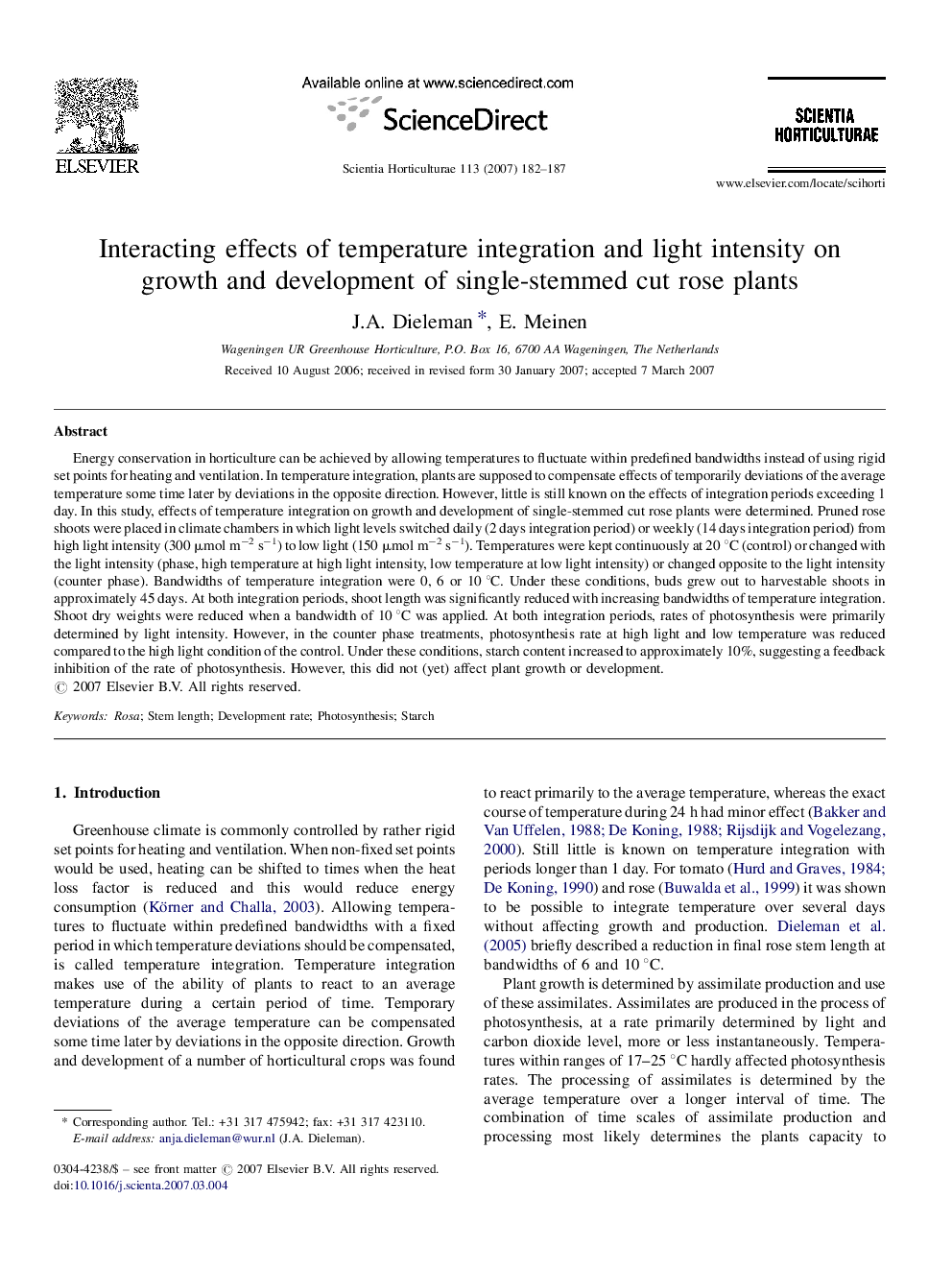| کد مقاله | کد نشریه | سال انتشار | مقاله انگلیسی | نسخه تمام متن |
|---|---|---|---|---|
| 4569604 | 1331346 | 2007 | 6 صفحه PDF | دانلود رایگان |

Energy conservation in horticulture can be achieved by allowing temperatures to fluctuate within predefined bandwidths instead of using rigid set points for heating and ventilation. In temperature integration, plants are supposed to compensate effects of temporarily deviations of the average temperature some time later by deviations in the opposite direction. However, little is still known on the effects of integration periods exceeding 1 day. In this study, effects of temperature integration on growth and development of single-stemmed cut rose plants were determined. Pruned rose shoots were placed in climate chambers in which light levels switched daily (2 days integration period) or weekly (14 days integration period) from high light intensity (300 μmol m−2 s−1) to low light (150 μmol m−2 s−1). Temperatures were kept continuously at 20 °C (control) or changed with the light intensity (phase, high temperature at high light intensity, low temperature at low light intensity) or changed opposite to the light intensity (counter phase). Bandwidths of temperature integration were 0, 6 or 10 °C. Under these conditions, buds grew out to harvestable shoots in approximately 45 days. At both integration periods, shoot length was significantly reduced with increasing bandwidths of temperature integration. Shoot dry weights were reduced when a bandwidth of 10 °C was applied. At both integration periods, rates of photosynthesis were primarily determined by light intensity. However, in the counter phase treatments, photosynthesis rate at high light and low temperature was reduced compared to the high light condition of the control. Under these conditions, starch content increased to approximately 10%, suggesting a feedback inhibition of the rate of photosynthesis. However, this did not (yet) affect plant growth or development.
Journal: Scientia Horticulturae - Volume 113, Issue 2, 26 June 2007, Pages 182–187